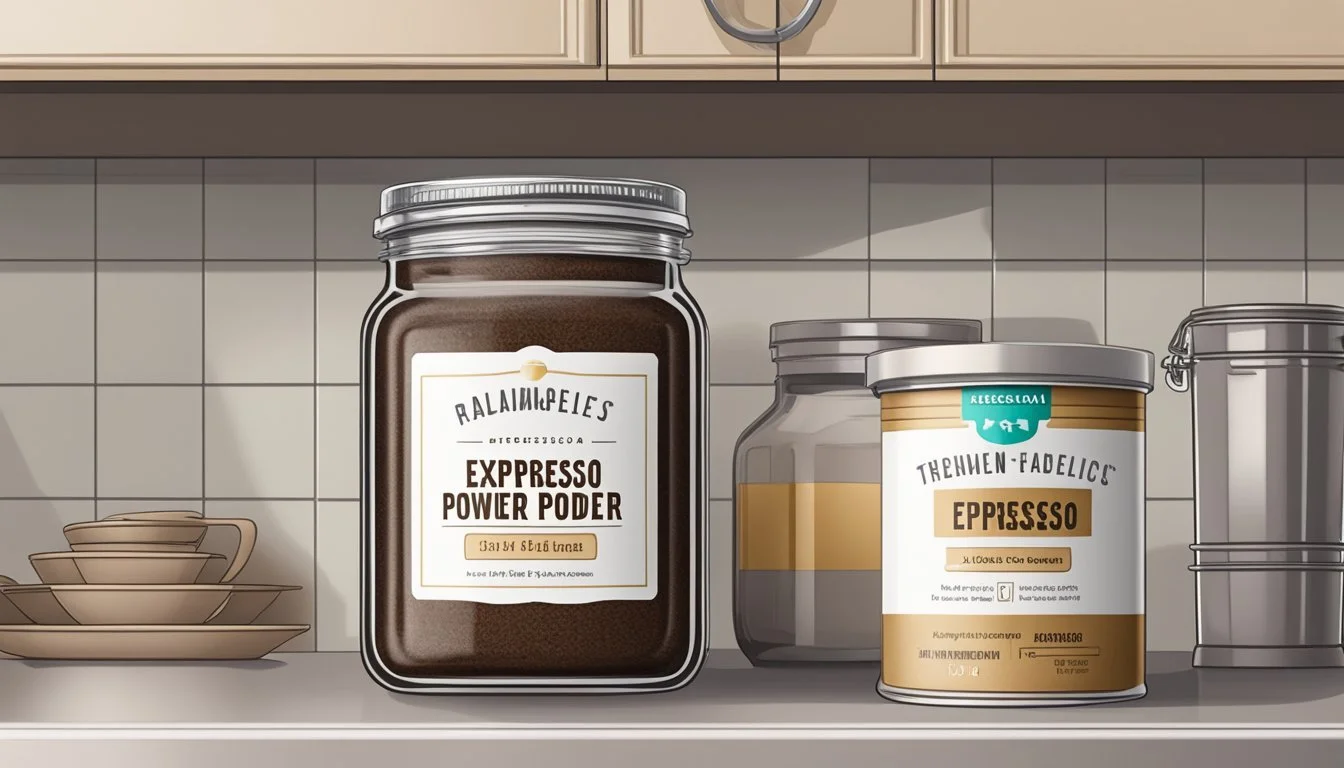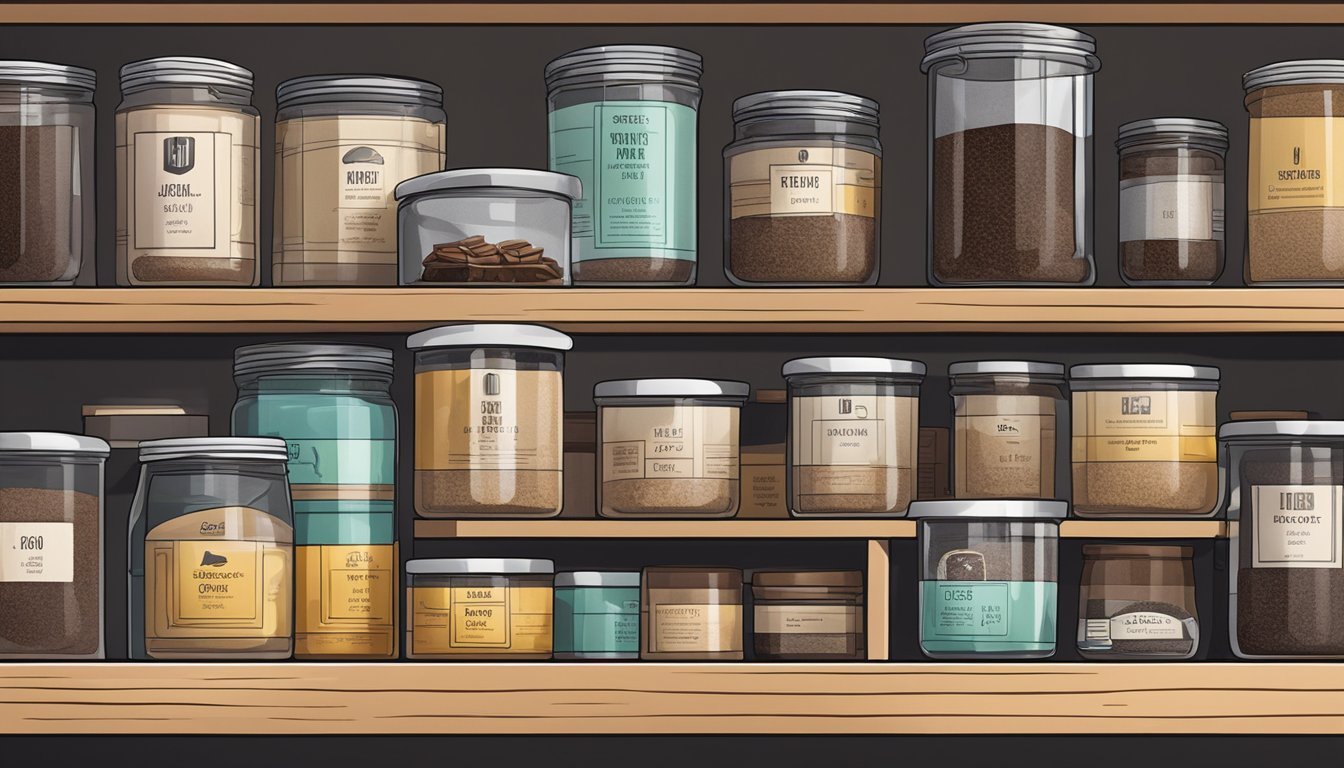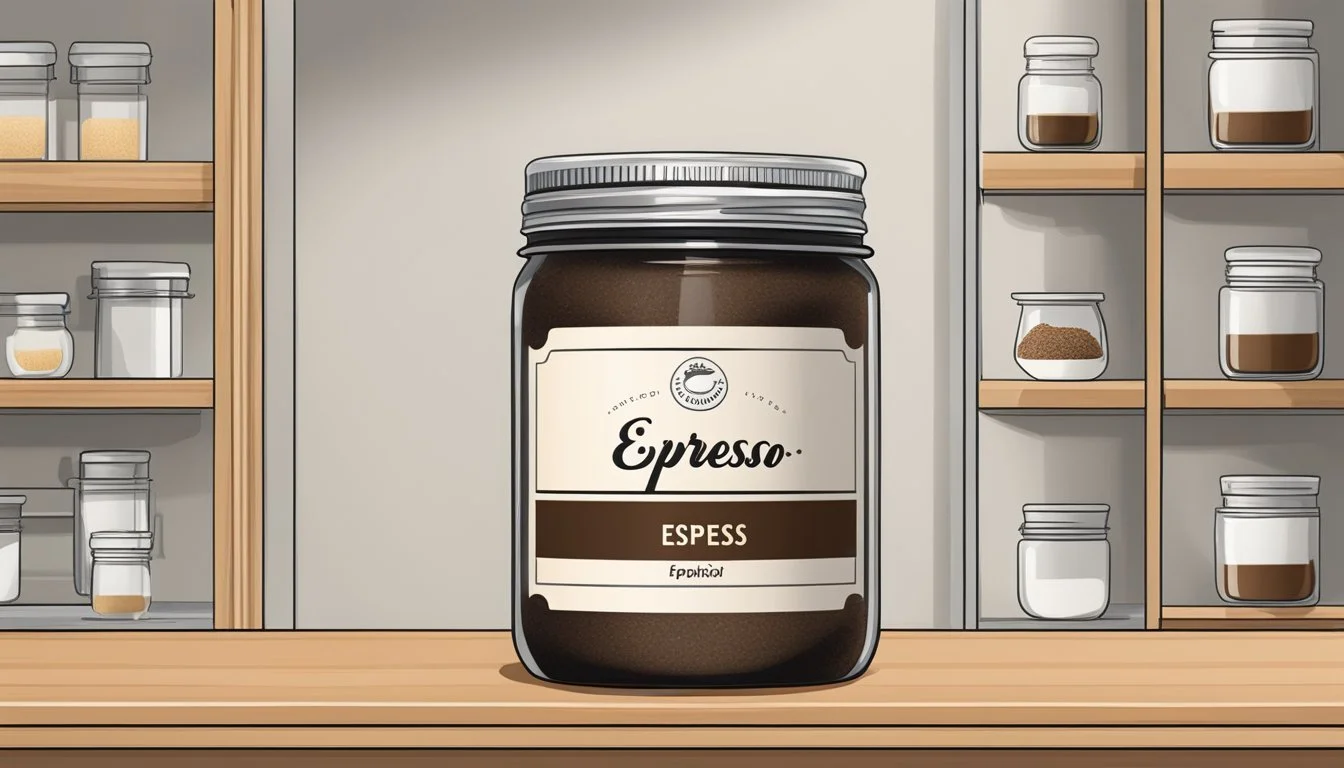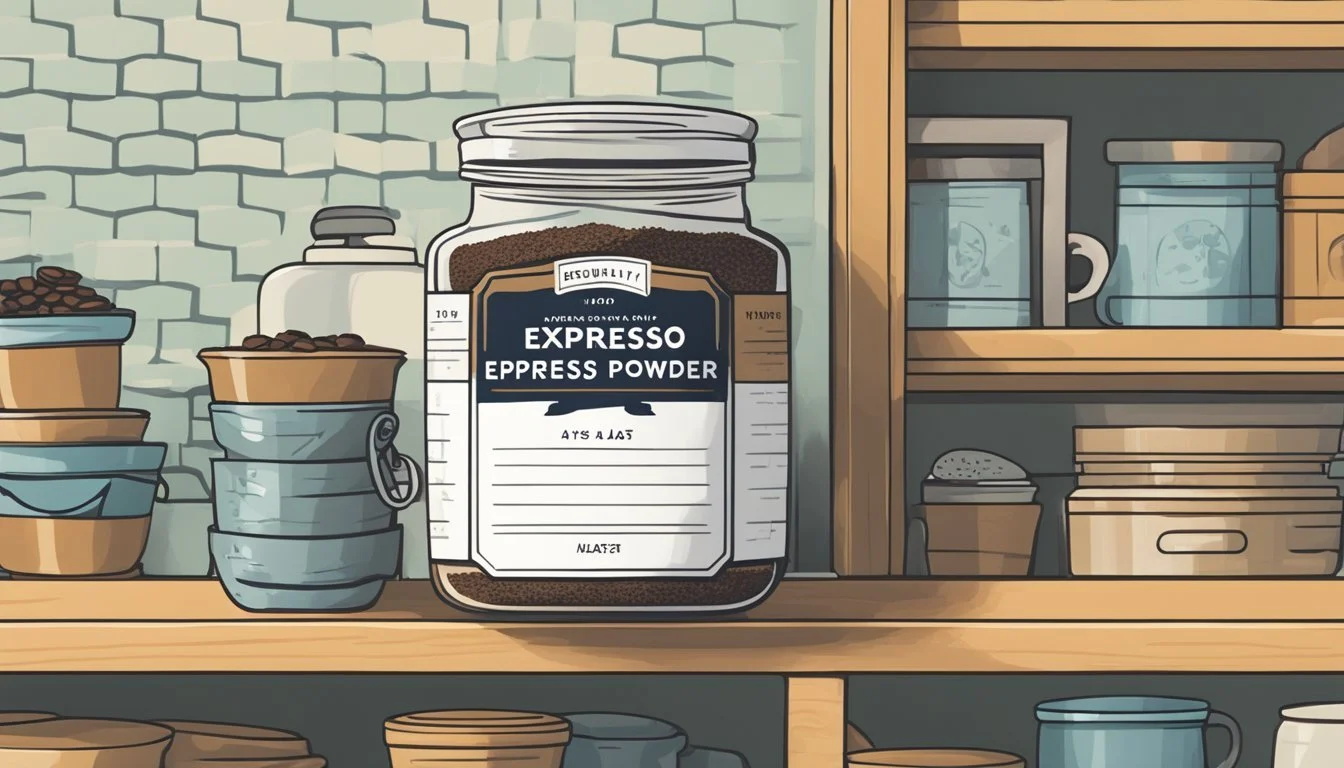How Long Does Espresso Powder Last?
Shelf Life and Storage Tips
Espresso powder is a staple in many kitchens, known for its deep flavor and versatility in both cooking and baking. It is created from darkly roasted coffee beans that are ground, brewed, and then dried into a fine powder. Due to its concentrated nature, espresso powder adds a rich coffee flavor without the liquid of brewed espresso, making it ideal for enhancing the taste of chocolates, brownies, and even savory dishes.
The shelf life of espresso powder can vary, but typically it lasts from six months to a year when stored properly. To maximize its longevity, espresso powder should be kept in an airtight container to prevent moisture and other contaminants from affecting its quality. The container should be placed in a cool, dry area away from direct sunlight, which can degrade the powder's potency over time.
As espresso powder ages, its flavor may diminish, losing the robust qualities that characterize freshly ground coffee. While some brands may claim a shelf life of up to two years under ideal storage conditions, it is generally advisable to consume the powder within a year for best taste and aromatic intensity. The loss of flavor does not necessarily mean the powder is unsafe to consume, but it may result in a less flavorful end product in culinary applications.
Understanding Espresso Powder
Espresso powder's influence in culinary applications is notable owing to its distinct composition, potent flavor, and its divergence from regular coffee powders.
Composition and Types
Espressos powder, a potent and flavorful derivative of roasted coffee beans, is finely ground to achieve its characteristic texture. Primarily used in baking and cooking, it differs based on the type of coffee bean used and the duration of roasting which influences its oil content. The two prevalent types are:
Pure Espresso Powder: Made from premium-quality espresso beans, intended specifically for cooking and baking.
Instant Espresso Powder: Targets beverage preparation, offering a quick-dissolving feature while being versatile enough for culinary usage.
Espresso Versus Regular Coffee Powder
Espresso and regular coffee powders differ on several fronts, pivotal for understanding their culinary roles:
Texture: Espresso powder is more fine and dissolves rapidly, making it ideal as a baking ingredient, unlike the coarser ground coffee.
Flavor Intensity: Espresso powder embodies a more concentrated flavor, owing to its finely ground texture and rich oil contents, versus the milder taste of regular instant coffee.
Utilization: The robust flavor of espresso powder is perfect for enhancing chocolate desserts (What wine goes well with chocolate desserts?) and savory dishes while regular coffee powder is more suitable for a gentler coffee flavor in beverages and cooking.
By recognizing these nuances, one can better appreciate the unique contributions espresso powder makes to the culinary arts.
Factors Influencing Shelf Life
Espresso powder, like many food products, has a shelf life that is affected by various storage and environmental conditions. Understanding these factors can help in maintaining the quality of the powder for as long as possible.
Exposure to Air
Oxidation occurs when espresso powder is exposed to air, leading to a loss of flavor and quality. To combat this, it should be stored in an airtight container to minimize its contact with air and extend its shelf life.
Temperature and Humidity
Temperature and humidity play significant roles in the shelf life of espresso powder. It is ideal to store it in a cool, dry place to prevent the powder from clumping and becoming moldy. The presence of moisture can accelerate spoilage, so maintaining low humidity levels is crucial.
Light and Storage Conditions
Light, especially direct sunlight, can degrade the quality of espresso powder over time. It should be kept in a cupboard away from light to preserve its freshness. Appropriate storage conditions, including a proper container and location, can significantly inhibit the degradation process and help maintain the shelf life of espresso powder.
Optimal Storage Solutions
To maintain the quality and extend the shelf life of espresso powder, proper storage solutions are essential. They prioritize protection from air, moisture, and temperature fluctuations.
Airtight Containers
To prevent espresso powder from absorbing odors and moisture, airtight containers are the first line of defense. Ideal materials for airtight containers are:
Glass jars: Non-porous and prevents interaction with the espresso powder.
Plastic containers: Ensure they are food-grade and have a tight seal.
Using an airtight container also helps to protect the espresso powder from the harmful effects of oxygen, which can degrade its flavor and strength over time.
Refrigerating and Freezing
While not necessary for short-term storage, refrigerating or freezing can be considered for longer preservation. Here's how to do it effectively:
Refrigerating: Place the airtight container in the refrigerator to keep it away from light and any temperature spikes. The container should be away from strong-smelling foods to prevent flavor transfer.
Freezing: For extended storage, freezing the espresso powder is an option. However, it's crucial to ensure the powder is in an airtight container to avoid freezer burn.
Note: When removing from the freezer, allow the container to reach room temperature before opening to prevent condensation inside the container.
Signs of Degradation
When assessing the quality of espresso powder, certain signs indicate the onset of degradation. These signs primarily involve changes in aroma and flavor as well as alterations in the visual aspect of the product.
Changes in Aroma and Flavor
Aroma: Espresso powder should have a rich and robust aroma. When it begins to deteriorate, the aroma may become faint and lose its characteristic intensity. A loss of aroma is often the first sign that the espresso powder has started to expire.
Flavor: A fresh espresso powder imparts a distinctly bold and nuanced flavor. As it ages and is exposed to factors like air and moisture, the flavor profile can change significantly. Initially, there may be a noticeable stale taste, which can progress to a sour or rancid flavor, suggesting the espresso powder is past its optimal use date.
Visible Quality Changes
Color: Fresh espresso powder typically exhibits a deep, chocolate-brown color. With time, this color may lighten or appear dull, indicating a loss in quality.
Texture and Clumps: Clumps in the powder may form due to moisture, signalling potential mold or bacteria growth. Any visual signs of mold mean the espresso powder is unsafe for consumption and should be discarded.
Staleness: The powder should be fine and free-flowing. If it appears compacted or has lost its friability, this often correlates with a stale product that has been exposed to external contaminants or has absorbed moisture from the air.
Espresso Powder Lifespan
Espresso powder is a convenient ingredient with a lifespan influenced by several factors. Understanding these can help consumers ensure the product remains fresh and flavorful for as long as possible.
Shelf Life Estimates
Espresso powder, like other coffee products, does have an expiration date. Typically, the shelf life of espresso powder is contingent upon brand, quality, and storage conditions. Estimates of how long it can last vary:
Unopened: Unopened espresso powder can last up to 2 years if stored properly.
Opened: Once opened, its freshness is best preserved for approximately 6 months to a year, depending on how it is kept.
Storage Tips:
Keep in a cool, dry area
Store in an airtight container
Avoid exposure to direct sunlight and humidity
These practices help maintain the quality and freshness of the espresso powder, keeping it from deteriorating prematurely.
Extending Shelf Life
To maximize the shelf life of espresso powder, consumers should focus on proper packing and storage. Optimal conditions should be consistent to prevent the degradation of the powder's quality and flavor.
Methods:
Airtight Containers: Using containers that prevent air and moisture from entering can significantly extend espresso powder's usability.
Temperature Control: Storing the powder in a stable, cool environment will discourage the growth of mold and prevent spoilage.
Away from Odors: Placing espresso powder away from strong-smelling foods can avoid it absorbing unwanted odors, which could affect its taste.
Adhering to these storage rules, individuals can maintain the integrity and potency of the espresso powder well beyond its estimated shelf life, ensuring that its distinct flavor profiles remain intact for future use.
Using Espresso Powder Beyond Coffee
Espresso powder, while known for its role in coffee preparation, also extends its rich flavor profile into culinary creations and baked goods, enhancing the overall taste experience.
Culinary Applications
In the culinary realm, espresso powder serves as a robust flavor enhancer. It pairs exceptionally well with meats such as beef, where a small quantity creates a deeper, more complex taste profile. Chefs often incorporate it into their spice rubs or marinades, capitalizing on its ability to amplify the natural flavors.
Dry Rubs: Add a teaspoon of espresso powder to your dry rub mix for meats.
Marinades: Stir in half a teaspoon of espresso powder to add richness.
Sauces: Espresso powder can lend depth to barbecue or chocolate sauces.
Espresso Powder in Baking
When it comes to baking, espresso powder is highly praised for its ability to enhance chocolate flavors, giving an intense and luxurious taste without overwhelming with coffee notes. Bakers integrate it into an array of confections, from brownies to tiramisu, where it subtly complements other ingredients.
Chocolate Desserts: Incorporate a small amount into chocolate cakes or brownies to deepen the chocolatey essence.
Whipped Cream: Mix into whipped cream to create an exquisite coffee-flavored topping for desserts.
Breads: Enhance chocolate or spice breads with a hint of espresso powder.
Using espresso powder can also interact with milk in recipes, enriching dairy-based dishes like custards (how long do custards last?) or ice cream with a nuanced coffee undertone.
The Brewing Process Impact
The brewing process significantly affects the shelf life of espresso powder. Once espresso is brewed, the clock starts ticking on freshness, with grind size and brewing method playing pivotal roles.
Effect of Grind Size and Freshness
Grind size is crucial in the brewing process. A finer grind is standard for espresso because it increases the surface area, which allows for a better extraction of flavors under high pressure. Conversely, a coarse grind can result in a weak, under-extracted brew.
Finer grinds: More crema, intense flavor, quick extraction.
Coarser grinds: Less crema, mild flavor, slower extraction.
Freshness also plays a significant role. Freshly ground beans contain more flavor and produce a high-quality brew with rich crema. As espresso powder ages, it loses its potency, resulting in a less flavorful cup.
Brewing Method Variations
Different brewing methods can impact the shelf life of espresso powder. The traditional espresso machine uses a portafilter and high pressure to brew, extracting flavors quickly and creating a fresh, high-quality beverage. However, when espresso is brewed using methods that involve less pressure or longer brew times, the flavor can deteriorate more rapidly post-brew.
Espresso machines: High pressure, consistent temperature, optimal extraction.
Other methods: Varying pressure and temperature, inconsistent extraction.
The temperature and pressure at which espresso is brewed can affect the resulting crema and ultimately dictate the freshness of the beverage. It's also important to consider the blend and quality of the beans used; higher quality beans will generally maintain their freshness longer after brewing.
Frequently Asked Questions
In approaching the shelf life of espresso powder, it’s important to distinguish between expiration and peak freshness, as they can significantly impact the quality of your beverages.
Does Espresso Powder Expire?
Espresso powder does indeed have an expiration date. Typically, when stored in a cool, dry place such as a pantry or cupboard, its shelf life can range from 6 months to 2 years. Factors that contribute to its longevity include the brand and packaging used.
Can Espresso Powder Be Used After Expiration?
Using espresso powder after the expiration date might not yield the best taste or potency. While it may not be harmful if stored properly, the flavor can become flat and the aroma dull. Hence, for optimal quality, it is recommended to use the powder within the suggested time frame.








